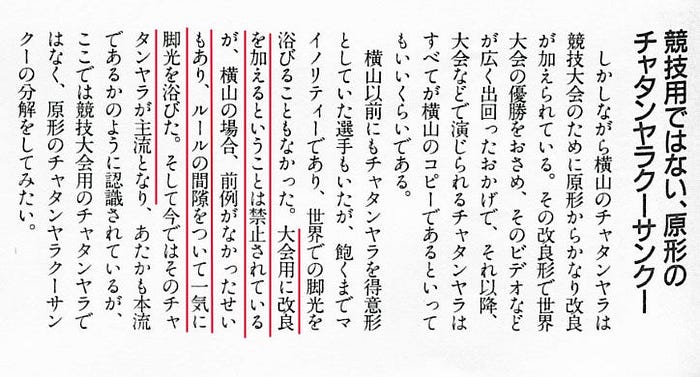Translated by Jean-Charles Juster.
Until now, I have covered the Pin.an shodan kata on numerous occasions in this blog:
- Motobu Chômo’s Pin
- Le Pin.an de Yabu
- Le Pin.an shodan de Tôyama Kanken
The Pin.an shodan of Motobu Chômo is the kata of the younger brother of Motobu Chôyû. It is believed that this is the first version of Pin.an shodan to which the term “shodan” is not added. Yabu’s Pinan shodan is the kata of Yabiku Môtoku who was a student of Yabu Kentsû at the Okinawa Normal School. In these two katas, we find naifanchi dachi as a position. Tôyama Kanken was a year younger at the Normal School, and in Tôyama’s Pin.an shodan, the position neko-ashi is used. . But, the displays of both hands at the very beginning of the kata are similar to the form of Yabiku, which means that it has this particularity which differentiates it from contemporary Pin.an shodan.
As we can see, in Pin.an shodan we find traces of evolution, and it seems that it has undergone several variations. To this, there is a theory that at the end of his life, Itosu modified the parade passages of the edge of the handshutô uke into defenses with clenched fists. In the old Monthly of Karatedô, there is the following description
At the end of his life, Master Itosu said to my master, Hanashiro Chômo who served as his assistant:
“Hanashiro, I thought about the subject of Pin.an, and since it often happens that practitioners injure themselves by hitting them with the tips of their fingers, I came to the conclusion that it was better to change to the clenched fists.”
This is why Master Hanashiro taught us to change the slashing techniques with the shutô hand for those with the clenched fist. (note)

During the first part of Pin.an shodan, there is a passage where one parries three times with the edge of the hand while advancing from the front. This is the passage mentioned in the quote given above. Itosu changed this passage to clenched fists because the sharpness of the hand is dangerous.
Hanashiro was a physical education teacher at the former Okinawa Middle School. According to Kinjô Hiroshi, this episode dates from the end of Itosu’s life, and therefore, because he did not have many disciples, these changes were not very widespread. Even when Hiroshi turned to Mabuni, the latter was unaware of these changes. In other words, it is a “final version of Pin.an shodan” which has remained in the shadows.
And, is this story true? At Higa Kiyohiko’s Bugeikan dojo in Okinawa, this Pin.an shodan with clenched fists is transmitted. This is the Pin.an shodan transmitted by Nakandakari Kanzô, a disciple of Hanashiro.

Thanks to Ulf Karlson, a disciple of Higa Kiyohiko, I had the opportunity to see a video of this Pin.an shodan. These images are not public, but I am including a screenshot here, after receiving permission.
By the way, the position of this Pin.an is naihanchi dachi. In the Pin.an of Yabu transmitted by Yabiku Môtoku, we find this same position. Would Hanashiro have taught this Pin.an shodan with the position naihanchi to some of his disciples?
It has been said that Itosu modified open-handed techniques (poke nukite, slashing hand shutô) in closed-hand techniques (like the clenched fist). The anecdote reported above confirms this theory. This is an interesting anecdote when we look at the modernization of karate.
note: Kinjô Hiroshi, “Study of Pin.an (5)”, Le Mensuel du Karatedô, February issue, (vol . 2, no. 6), Karate jihosha, 1957, p. 16.
The original French translation was published on June 7, 2020 on the Ameba blog.
Thank you for reading my story. If you don’t mind, clap and follow me.
Written by Motobu Naoki

Shihan, Motobu Kenpō 7th dan, Motobu Udundī 7th dan. Discusses the history of karate and martial arts, and introduces Japanese culture and history. https://www.motobu-ryu.org/















